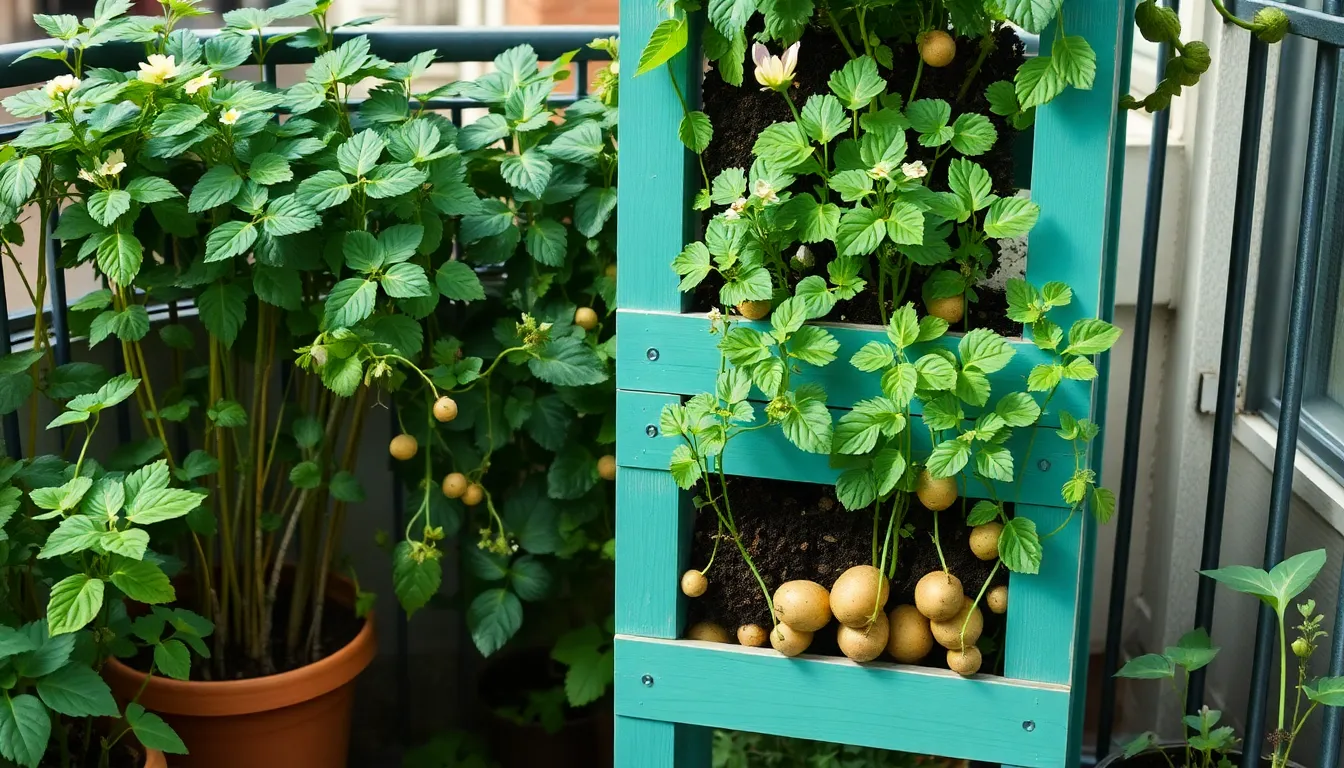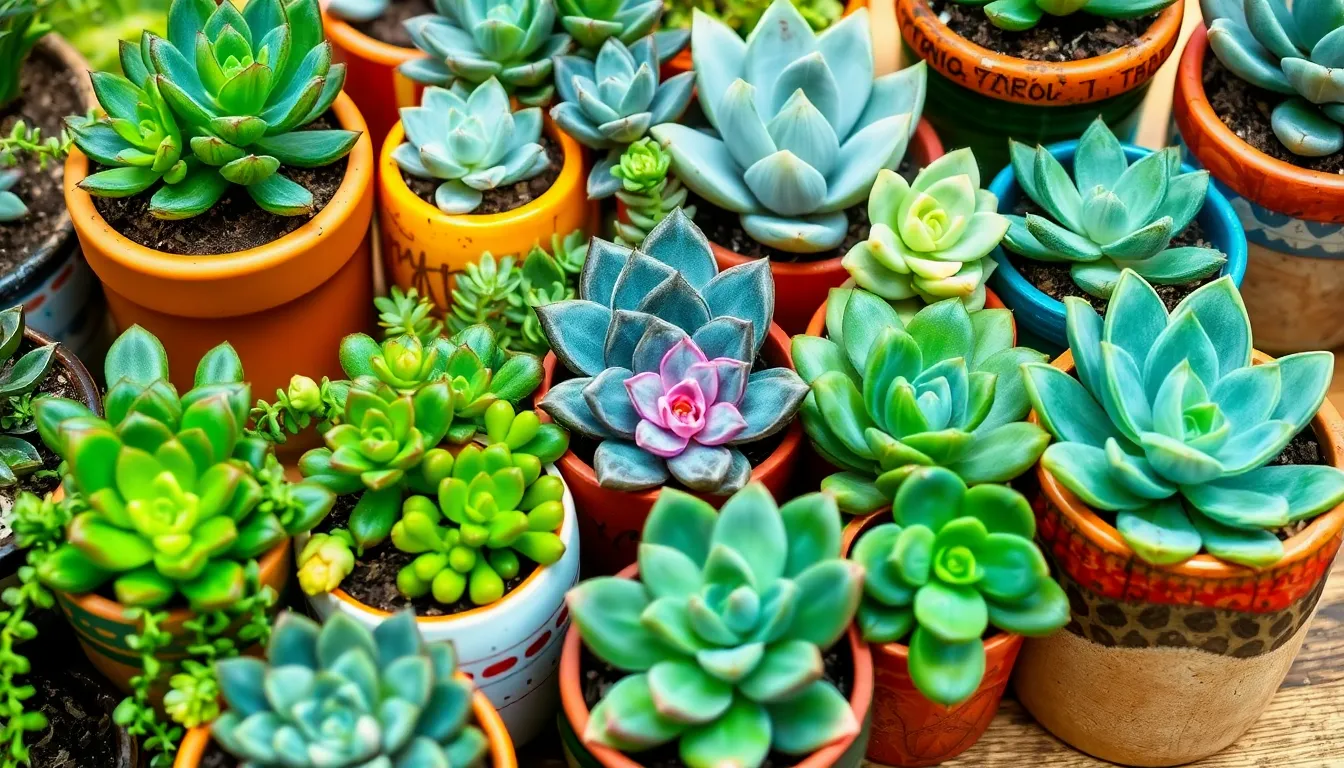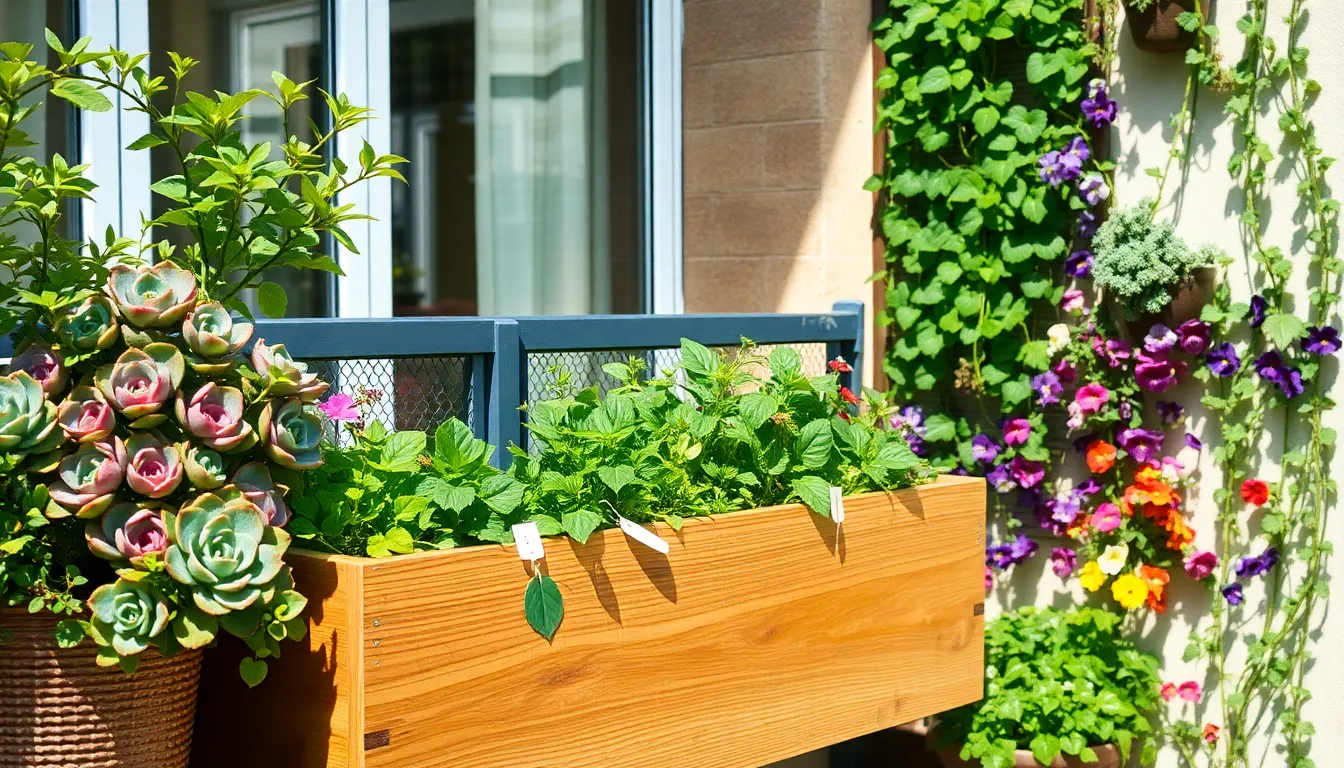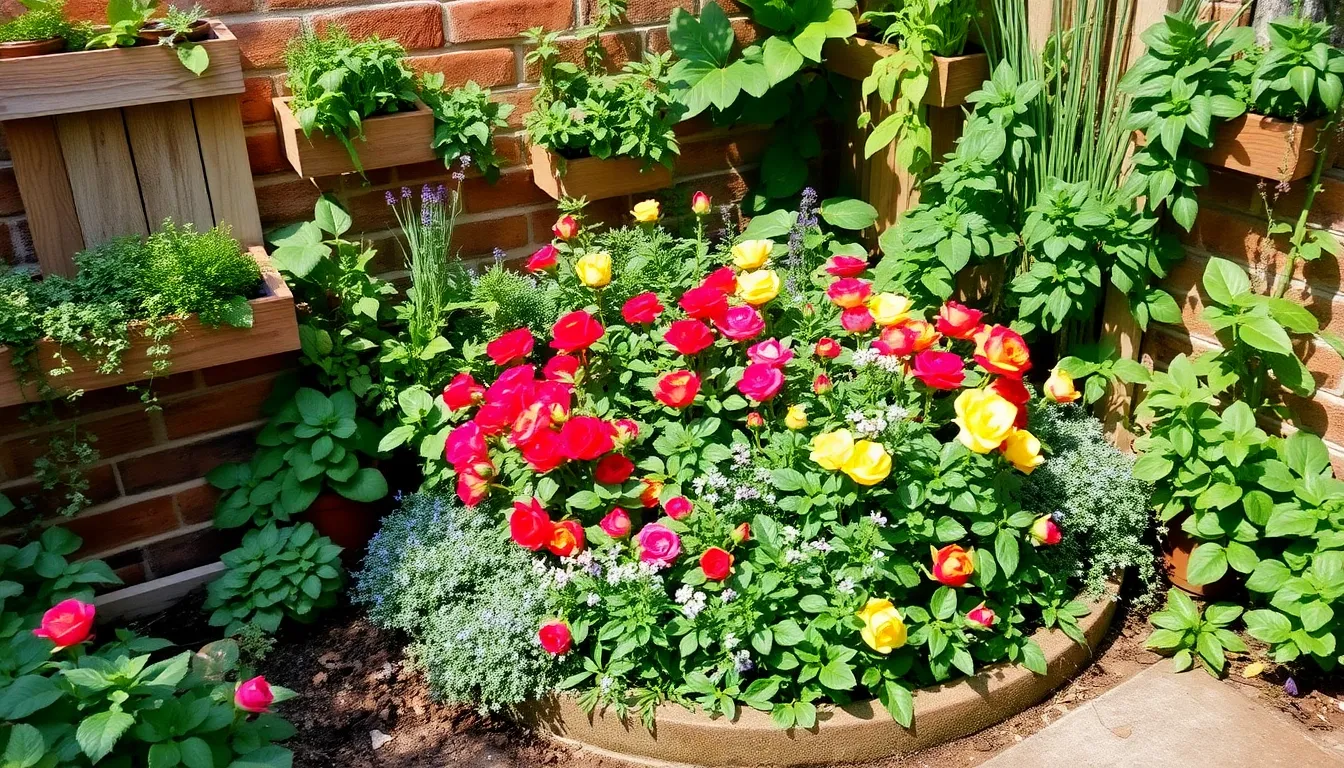Growing your own potatoes might seem like a luxury reserved for those with sprawling gardens, but the truth is, you can cultivate these versatile tubers even in the smallest of spaces. Whether you’re a seasoned gardener looking to maximize your urban balcony or a beginner eager to taste the satisfaction of home-grown spuds, this guide is your key to success.
In the realm of gardening, few things are as rewarding as harvesting your own potatoes, a staple food that connects us to the earth in the most delicious way. This article will walk you through innovative techniques and tips that allow you to grow potatoes in containers, bags, or even vertical stacks, transforming any tiny nook into a productive potato patch.
You’ll learn how to select the right potato varieties, prepare your containers, and nurture your plants to fruition. By the end, you’ll not only have the know-how to grow your own potatoes but also the confidence that gardening is within reach, no matter how limited your space may be.
Select Compact Potato Varieties
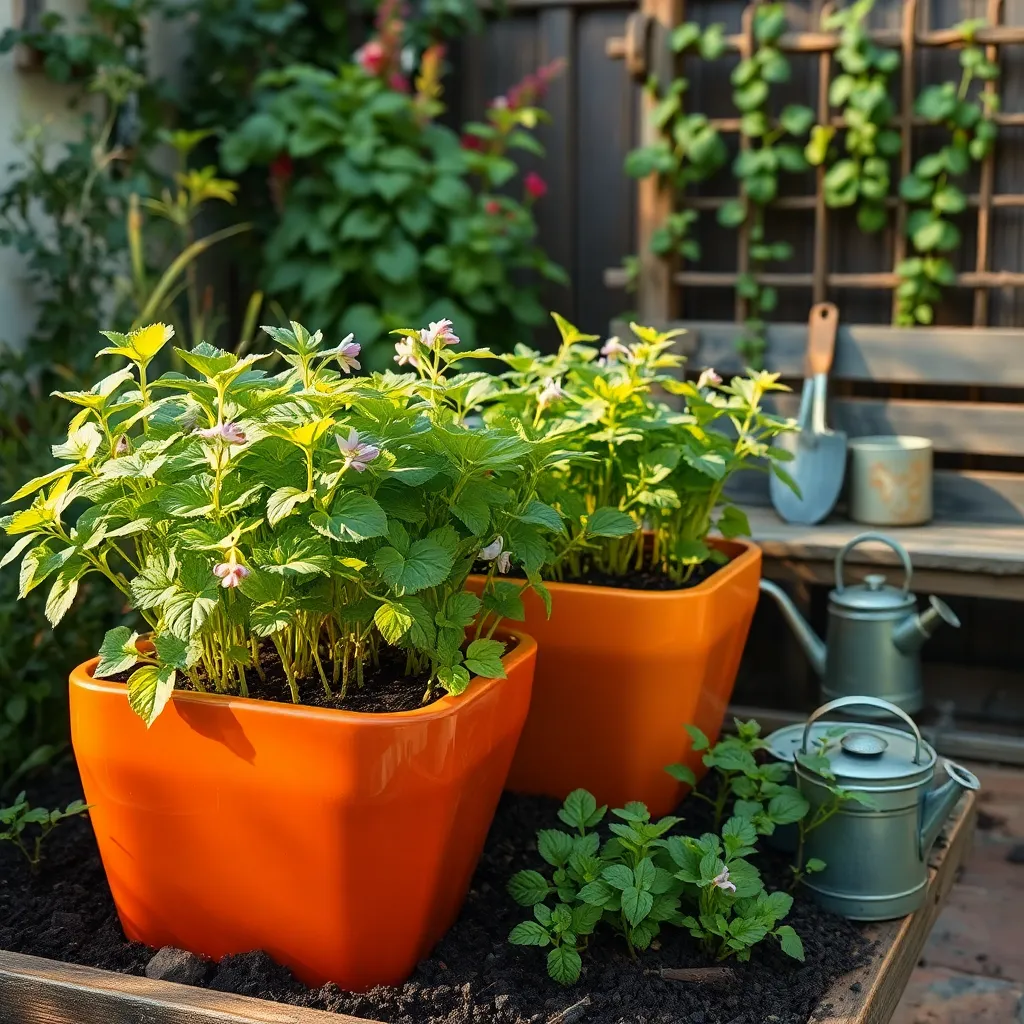
Growing potatoes in small spaces is entirely feasible with the right variety selection. Compact potato varieties are specially bred to have a smaller footprint, making them ideal for container gardening or urban spaces. Choose varieties like ‘Adora’, ‘Fingerling’, or ‘Charlotte’ which are known for their compact growth habits. These types not only save space but also have a shorter growing season, allowing for multiple harvests in a year.
When selecting these varieties, look for those that are labeled as “early” or “first early” potatoes. These types mature quickly, often in about 10 to 12 weeks, giving you a faster yield in limited spaces. Ensure your soil is rich in organic matter and well-draining, which is crucial for preventing waterlogging. Container gardening is perfect for these potatoes as it allows you to control soil conditions more effectively.
Use containers that are at least 10 to 15 gallons in size to give the plants ample room to develop. Fill the container with a mix of high-quality potting soil and compost, ensuring a nutrient-rich environment. Water consistently but allow the top inch of soil to dry out between waterings to prevent rot. As the plants grow, gradually add more soil to cover the stems and encourage tuber development.
Advanced gardeners can experiment with stacking containers or using grow bags to further optimize space. This technique involves planting in tiers, allowing you to harvest from multiple levels as the plants grow upward. Regular feeding with a balanced fertilizer every few weeks will ensure your compact potatoes receive the nutrients they need for robust growth. With these strategies, even the smallest garden can yield a bountiful potato harvest.
Prepare a Suitable Container
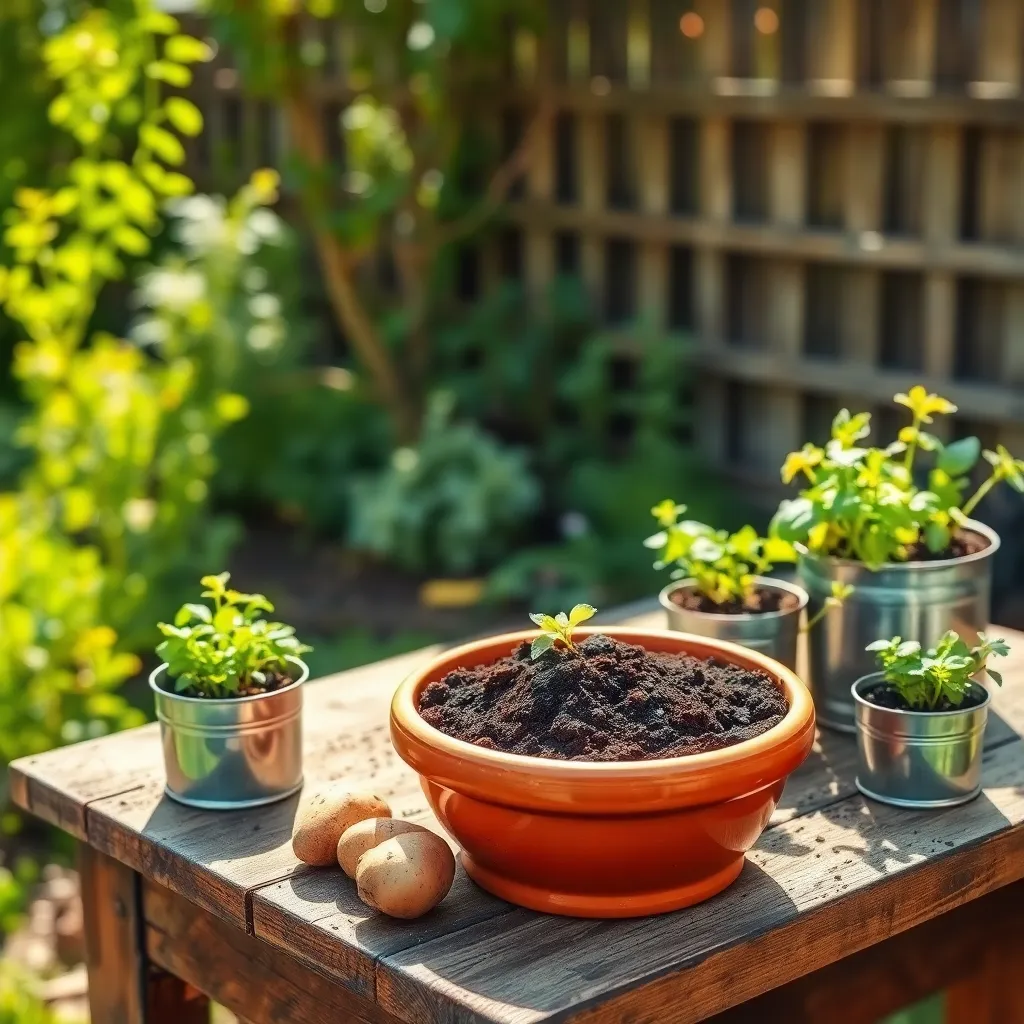
Choosing the right container is crucial for growing potatoes in small spaces. A container should be at least 12 inches deep and wide enough to allow for the development of healthy tubers.
Consider using materials like fabric pots or large plastic bins, which allow for good drainage and aeration. Drill holes in the bottom of any non-porous containers to ensure excess water can escape, preventing root rot.
Start by filling the container with a high-quality, well-draining potting mix. Incorporate compost or well-rotted manure to enrich the soil with nutrients, which will support robust potato growth.
Place your container in a location that receives at least six hours of sunlight daily. Ensure it’s easily accessible for regular watering, as potatoes need consistent moisture to thrive.
For advanced gardeners, consider using a layered approach, adding more soil as the plants grow. This technique, known as “hilling,” encourages the production of more tubers by keeping the developing potatoes covered. Monitor moisture levels to avoid overwatering, ensuring that the soil remains moist but not soggy.
Fill with Quality Potting Mix
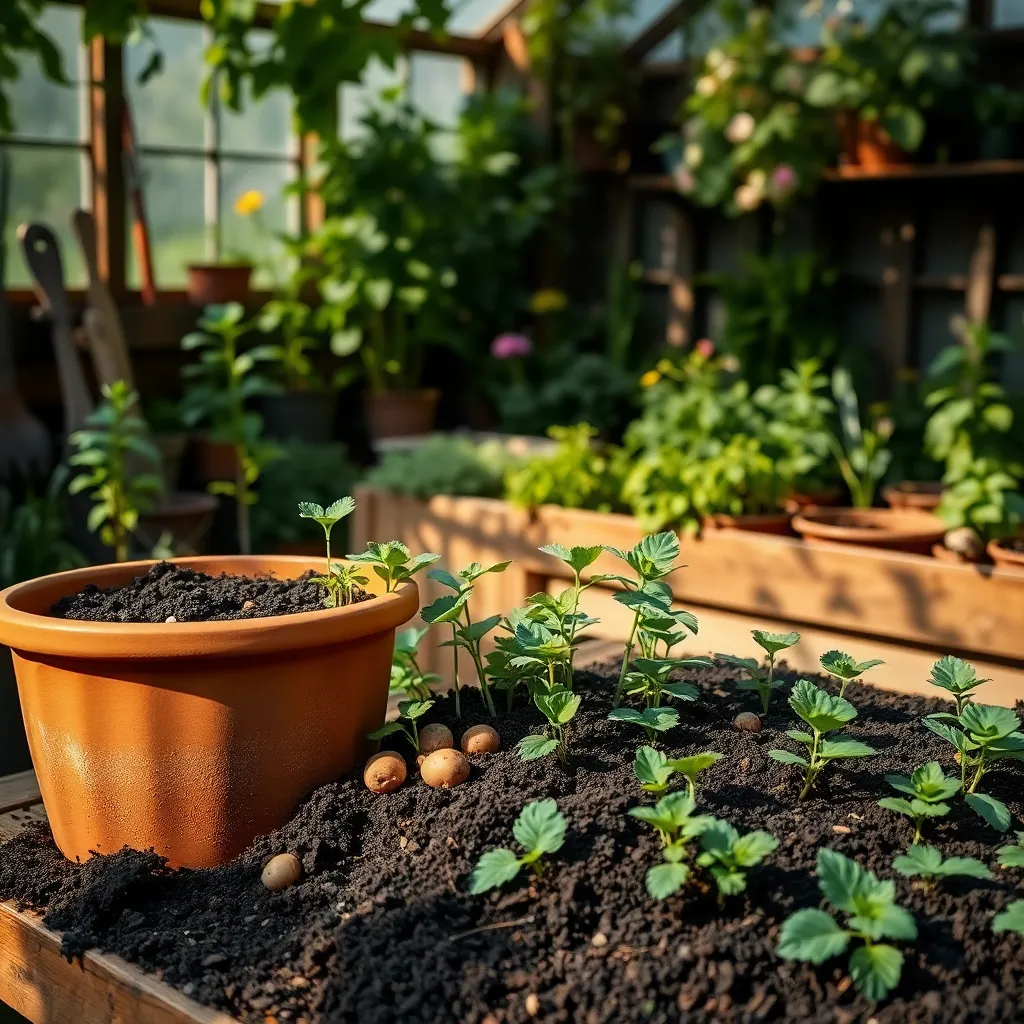
Once you have your container ready, it’s time to fill it with a quality potting mix. Choose a mix that is well-draining yet retains enough moisture to keep your potatoes happy. This is crucial for preventing waterlogging, which can lead to rot.
To ensure optimal growth, look for a potting mix with a balanced nutrient profile. A mix containing a blend of peat moss, perlite, and compost will provide a good balance of aeration, moisture retention, and fertility. Adding a slow-release organic fertilizer can also give your potatoes a nutrient boost throughout the growing season.
For beginners, a pre-packaged potting mix labeled for vegetables is a reliable choice. It takes the guesswork out of creating the ideal soil environment. More experienced gardeners might prefer to customize their mix by adding extra perlite for drainage or worm castings for a nutrient boost.
Once your potting mix is ready, fill the container until it’s about two-thirds full. This allows space for hilling, a technique where additional soil is added as the potato plants grow. Hilling helps support the plant and encourages the growth of more tubers, maximizing your harvest potential.
Plant Seed Potatoes Correctly
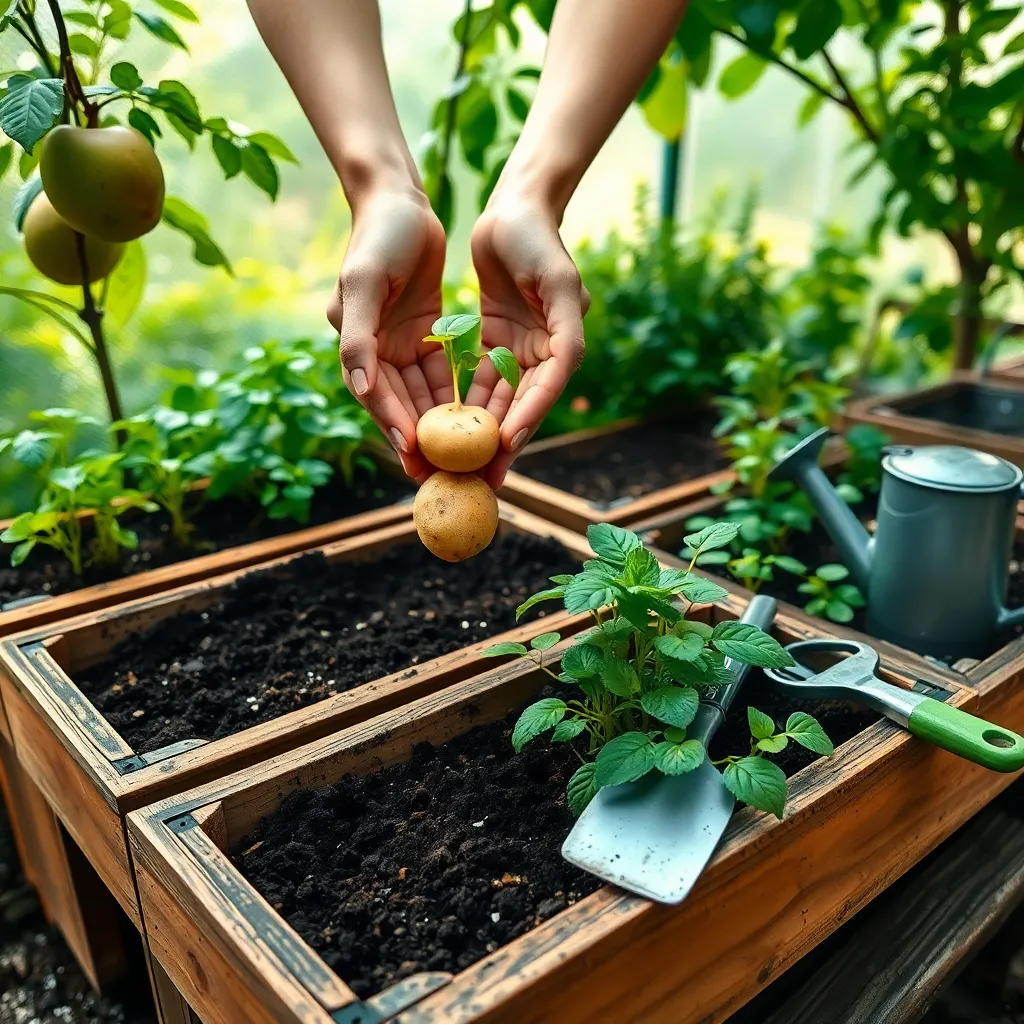
To plant seed potatoes correctly, start by choosing certified seed potatoes, which are less likely to carry diseases. Look for small, firm potatoes with at least two to three eyes each, as these eyes are where new growth will emerge.
Next, cut larger seed potatoes into chunks, ensuring each piece has at least one eye, and let them dry for a day or two to form a protective skin. This step helps prevent rot and disease when you plant them.
In small spaces, consider using a container or grow bag, ensuring it’s at least 12 inches deep to allow for proper root development. Fill it with a mix of potting soil and compost for a nutrient-rich growing environment.
Plant the seed potato pieces about 4 inches deep and 6 inches apart, allowing room for the tubers to expand. Cover them with soil and water thoroughly to keep the soil consistently moist but not waterlogged.
As the plants grow, it’s essential to mound soil around the stems to support the plant and increase tuber production. This process, called “hilling,” can be done by adding more potting mix or compost around the base of the plants.
Monitor the soil moisture regularly, aiming to water when the top inch feels dry. Consistent moisture is crucial for healthy potato development, but avoid overwatering, which can lead to rot.
Ensure Adequate Watering Routine
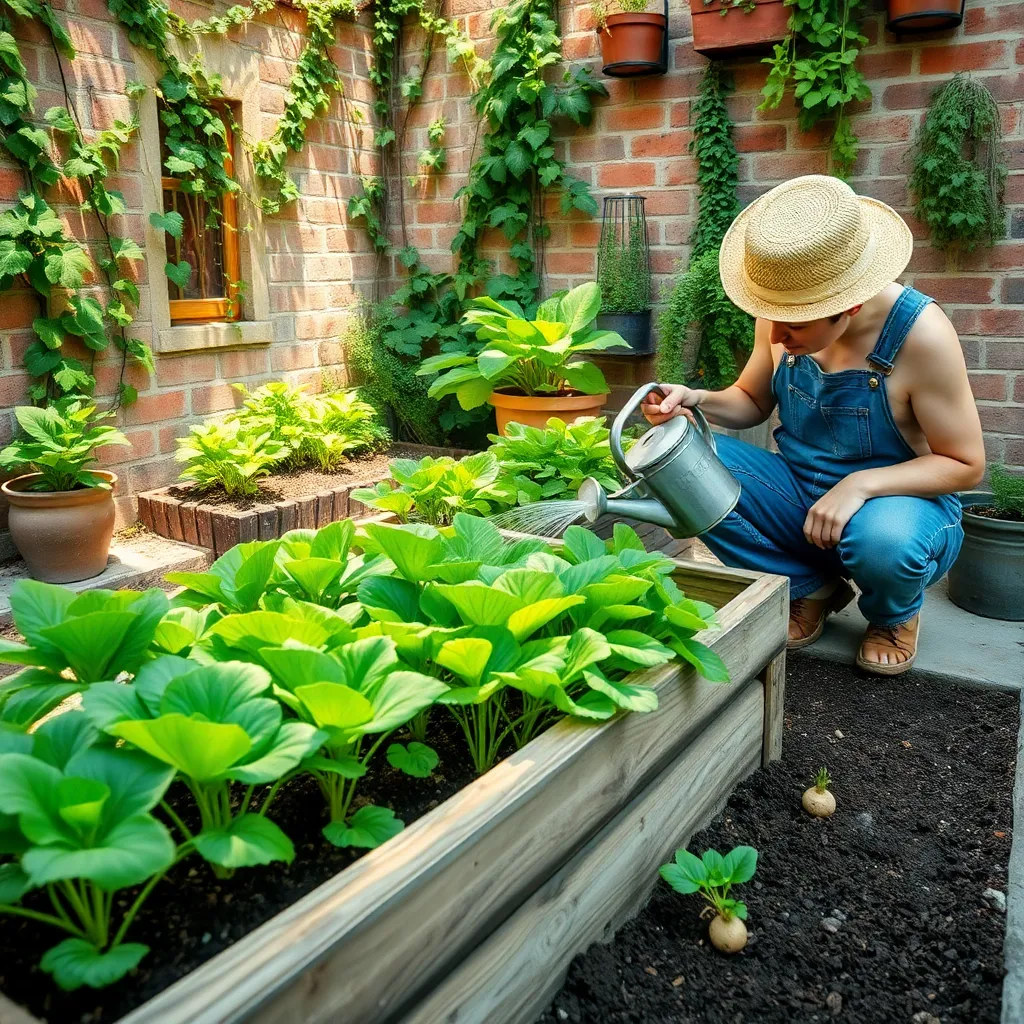
To ensure a successful potato harvest in small spaces, it’s crucial to maintain an adequate watering routine. Potatoes thrive in consistently moist soil but are prone to rot if overwatered, so finding a balance is key.
Begin by checking the soil moisture regularly, aiming for soil that is moist but not waterlogged. You can use a moisture meter or simply stick your finger an inch into the soil—if it feels dry, it’s time to water.
Water potatoes deeply, aiming to soak the soil to a depth of 6-8 inches, which encourages roots to grow deeper and stronger. Typically, potatoes need about 1 to 1.5 inches of water per week, including rainfall, so adjust your watering schedule accordingly.
For those using containers or bags, ensure they have good drainage to prevent water from pooling at the bottom. Consider using drip irrigation or a soaker hose to provide consistent moisture while minimizing water waste.
Conclusion: Growing Success with These Plants
As we’ve explored, nurturing relationships, much like growing potatoes in small spaces, requires creativity, patience, and intentional care. First, understanding your partner’s needs is akin to knowing the right soil conditions for your potatoes. Second, communication, much like ensuring adequate sunlight, is vital for growth. Third, setting boundaries is similar to defining the space for your plants, allowing both to thrive. Fourth, celebrating small wins in your relationship parallels the joy of seeing the first sprout, reinforcing progress. Lastly, adaptability is key, just as adjusting to environmental changes ensures a bountiful harvest.
To put these concepts into practice, start by having an open conversation with your partner about one area you can both improve. This small step can lead to profound changes. Moreover, bookmark this article as a handy guide to revisit these strategies and keep your relationship flourishing.
Remember, relationship success is an ongoing journey where every action counts. By embedding these principles into your daily interactions, you’re investing in a future filled with understanding and love. Empower yourself with this knowledge today, and watch your relationship grow robustly and resiliently.

